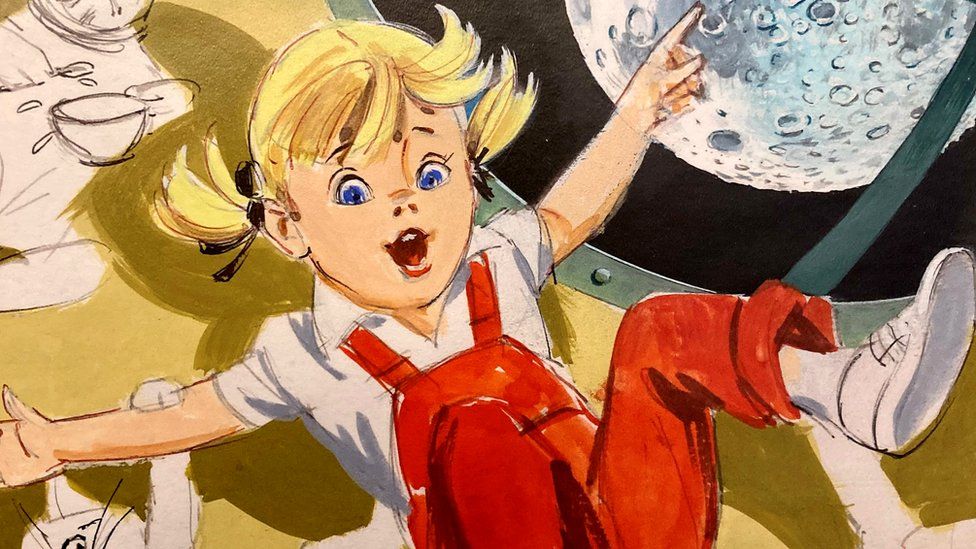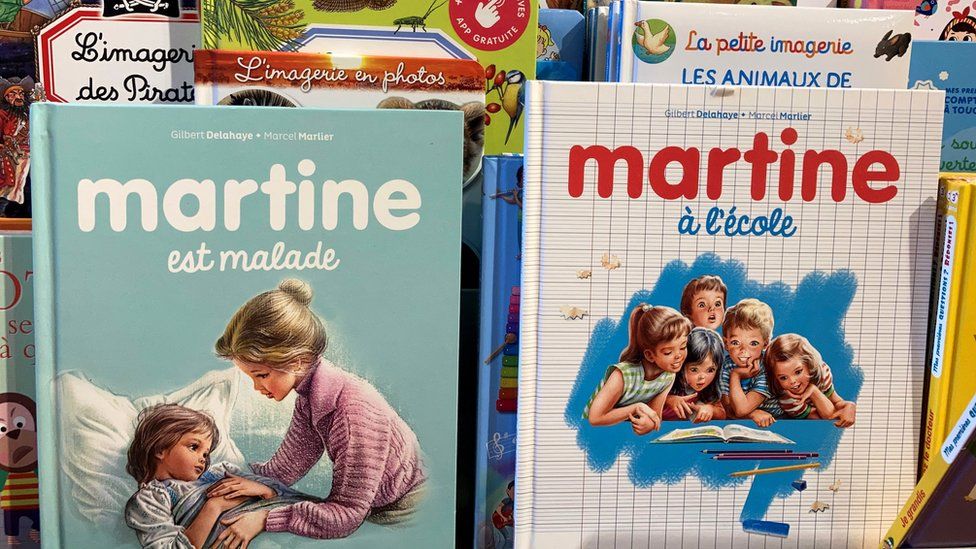 SIMONE PROBST COLLECTION,Caroline's adventures first hit the bookshops in 1953, closely followed by Martine
SIMONE PROBST COLLECTION,Caroline's adventures first hit the bookshops in 1953, closely followed by MartineDo you like your childhood heroine to be the type that catches outlaws in the Wild West, can re-plumb and re-roof an entire country home, and once survived a biplane crash in the Arctic?
Or would you rather a girl who cooks biscuits with Mum, enjoys sewing lessons and the occasional game of marbles, and whose idea of an adventure is taking the train to visit cousins in Normandy?
For nearly 70 years, Caroline and Martine have been rivals for the hearts of French schoolchildren.
If you were a more outdoors-type you would have gone for Caroline. She was the first to appear in 1953 for publisher Hachette.
Created by artist Pierre Probst, she wore red dungarees and led an adult-free existence with a gang of eight animal friends: two cats, three dogs, a bear, a lion and a panther.
Such was her success that a year later rival publishing house Casterman dreamed up Martine with artist Marcel Marlier.

But while Caroline lived in a magical world where cats drive cars and 10-year old girls can travel the countryside at the head of their own circus, Martine was firmly attached to the domestic apron-strings. READ MORE...
https://www.bbc.com/news/world-europe-59644739


















 GETTY IMAGES
GETTY IMAGES



